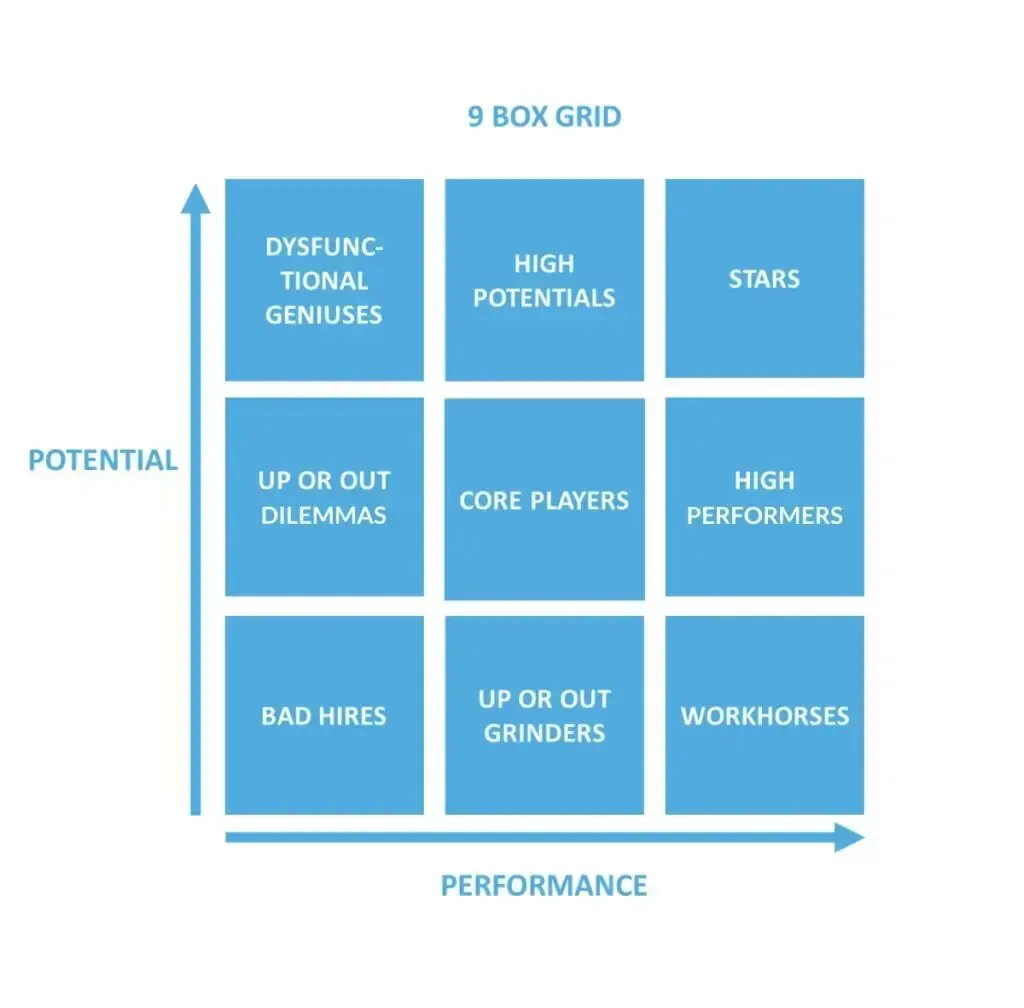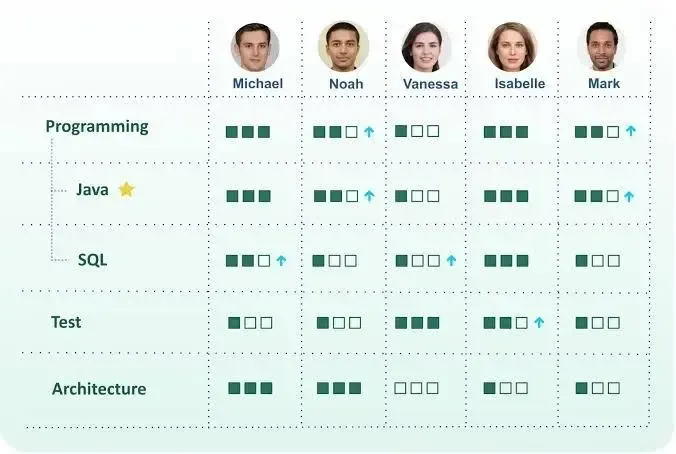Workforce Planning: A Strategic Guide to Future-Proofing Your Team
Explore a complete guide to workforce planning—learn how to align talent, forecast needs, close skill gaps, and drive business success with Empuls.
On this page
You know what they say: a team is only as strong as its weakest link. So, it is important to have the right talents, with the right skills, in the right roles, and at the right time. Only then can you create a symphony of talent, with each team member playing their part to perfection.
However, you can only achieve this feat if you have a firm workforce plan. Fortunately, by the end of this article, you will understand the details of workforce planning, from what is workforce planning to how you can build one for your business.
Let’s dive in.
What is workforce planning?
Workforce planning involves a series of analyses and forecasts to ensure that you are staffing your business with the right talent, experience, and knowledge. This planning can be carried out using workforce management software like Runn. Here’s an example.
There are two primary models of workforce planning: strategic workforce planning and operational workforce planning.
1. Strategic workforce planning
It is all about looking at the big picture and the long-term needs of your business. It’s a process of forecasting your future workforce’s needs based on your business key goals and objectives. By using this, you can map out a game plan for the future - onboarding new talent, training and retaining your current workforce, etc.
2. Operational workforce planning
It involves ensuring that you have the right amount of staff and skills for your business’ daily operational needs. Imagine this: you run a retail store and it’s the holiday season. Operational workforce planning involves hiring more employees with the right skills to cater to the increase in customers.
What is workforce planning? Overall, workforce planning is a holistic way to manage your team and ensure that it aligns with your business goals.
Why is workforce planning important for your business?
A sound workforce management plan is more than a nice-to-have—it’s a necessity. It brings several strategic advantages:
- Team balance: Without a plan, your workforce may become skewed—overstaffed in one area, understaffed in another. This imbalance reduces overall team effectiveness.
- Skills optimization: Through identifying and addressing skills gaps, you ensure your team has the competencies needed to stay competitive.
- Regulatory compliance: Industries are governed by labor laws and regulations. Workforce planning helps ensure your hiring, staffing, and scheduling practices remain compliant.
By addressing these areas, your business can avoid last-minute scrambles, improve employee satisfaction, and prepare for both opportunities and disruptions, which we will discuss in the section of importance.
What is the importance of workforce planning?
Workforce planning is necessary for several reasons. For one, it helps you get the right balance in your team. Without a plan, you risk over-concentrating one area in your team at the expense of another. This leads to an imbalanced and ineffective team. You want to avoid that.
Further, workforce planning involves identifying skill gaps within your workforce. When you find these skill gaps, you can close them up effortlessly. Thus, you can ensure that your workforce has the skills required for you to stay competitive in the market.
Finally, workforce planning helps with compliance. Many industries have specific regulations and laws that govern employment. A well-thought-out workforce plan can help you ensure that you comply with these regulations and laws.
What are the benefits of workforce planning?
Around 89% of businesses have integrated workforce planning into their business plan. If you’re looking to join these businesses, here are the benefits to expect.
1. Determine Risks
Helps determine risks before they affect organization's objectives. Planning your workforce can help you find potential risks before they can affect your business goals. When you identify these risks, you can be proactive and mitigate any issues before they arise.
Imagine you are a small business owner who is just about to launch a new product. Everything is set, but suddenly, a key employee quits.
An effective workforce plan would have helped you identify the potential risk of a key talent leaving. Then, you would’ve proactively created strategies to mitigate the risk instead of scrambling to find a replacement at the last minute.
2. Powerful tools and reports
Gives you tools and reports that explain how decisions have an impact. Workforce planning gives you powerful tools and reports that can help you understand whether your decisions are affecting the workforce positively or negatively.
Using surveys and workforce management software, you can identify patterns and trends in your workforce. You’ll know which department is shrinking or growing.
You’ll also access key data such as employee turnover rates, productivity, etc. High turnover rates and low productivity over time could mean you’ve been making wrong decisions, and vice versa. With this information, you can make data-driven decisions to improve your workforce.
3. Insights on supply and demand
Helps you understand problems with supply and demand. Planning your workforce also helps you gain insights into the issues related to workforce supply and demand. When you regularly assess your current and future workforce needs, you can find out areas with shortages or surpluses of employees.
With this information, you can make better-informed decisions to balance talent demand and supply. These decisions could include layoffs, training, hiring, etc.
Let’s say you run a store where you’re constantly short-staffed on weekends. A workforce plan helps you understand this issue with staff demand. Then, you can make plans to hire (supply) more employees to cover the demand.
4. Proactively detect issues
Ensures you recognize potential productivity-limiting problems. Finally, workforce planning allows you to proactively detect issues that can hold your team back. Identifying these issues makes it easier to tackle them.
Regular assessment is an integral part of workforce planning. The assessment can be as simple as real time meetings with your employees to understand how they feel about their responsibilities, roles, and overall job satisfaction.
That helps you identify what can limit your employee's productivity - low job satisfaction, mis-profiling employees, etc.
When you identify these issues, you can then solve them using the appropriate strategies. These strategies could include investing in training plans, implementing flexible working arrangements, or even incentivizing your employees.
When should you use workforce planning?
Workplace planning is not a one-time initiative. It should be an ongoing, dynamic process that adapts to your business's current and future needs. Here are the key moments to implement or revisit your workforce plan:
- When forecasting future growth or expansion
- When entering new markets or geographies
- When experiencing high turnover or retention challenges
- When preparing for technology shifts or industry disruptions
- When reevaluating operational efficiency
Whether it’s the end of a fiscal quarter or the start of a new product launch, revisiting your workforce management plan during these pivotal times can help your team stay prepared.
5 Effective workforce planning steps
Having understood what workforce planning is and its benefits, let’s walk you through its implementation.
1. Ensure long-term focus
When it comes to workforce planning, you can easily get caught up in the day-to-day and concentrate on immediate needs.
But to build a truly robust and sustainable team, you need to think beyond the next year or next quarter and focus on five, ten, or even 20 years.
Long-term focus is even more necessary if your business operates in a niche subject to changes and disruptions. For example, the technology field. If you don’t consider roles that you’ll need in the future in your workforce plan - web3 and AI prowess, innovative email verification approaches, IoT, etc - your workforce might become obsolete.
Long-term focus also means you’re thinking about succession planning and retirement. It is important to think of vital roles that might be difficult to fill when the current employees filling them leave. So, you’ll be able to fill the shoes and ensure business continuity.
The 9-box grid can help with your succession planning. This tool helps you analyze and classify your employees based on their performance and potential, as shown below. You can easily choose those with the best potential and performance for succession.

You can also focus on the long term by implementing a talent management program in your plan. A talent management program helps you nurture talents until they can assume key positions in your organization. This is particularly necessary, considering that 85 million jobs could be unfilled by 2030, due to a scarcity of qualified employees.
- Empuls’ People Analytics and AI-driven insights help HR teams and leadership forecast long-term talent needs by analyzing trends in engagement, turnover, skill adoption, and performance.
- Lifecycle surveys track sentiment across the employee journey—from onboarding to exit—enabling forward-looking planning.
- Use succession planning tools like performance and potential matrices powered by feedback surveys and peer reviews.
2. Find skills gaps
Skill gaps are those areas where your employees don’t have the knowledge or skills to do their jobs effectively. When you identify these gaps, you can make strategies in your workforce plan to close them.
To find these gaps, conduct consistent performance evaluations. This could be through weekly reviews, surveys, productivity records, 360 degrees feedback, etc. By using this evaluation, you can discover the key areas where your employees may be struggling and need additional training.
You can also study industry trends and technological changes to identify gaps. For example, if a new technology is becoming prevalent in your field and your team lacks the skills to work with it, it can be a huge gap.
Finally, you can use a skill matrix to represent the results of your skill gap analysis. As shown below, this document includes every skill needed for every role in your organization. You can then map the skills to what your team members currently have. This gives a clearer picture of where your gaps are.

When you identify these skill gaps, you’ll understand where to focus your operational and strategic workforce plan.
- Launch custom or templated 360° feedback surveys and performance evaluations to detect skill gaps.
- Use pulse and eNPS surveys to surface training needs and engagement dips which may point to knowledge or skill deficiencies.
- Community Groups on the social intranet facilitate peer learning and skill discovery among employees with shared interests or roles.
3. Plan workforce's future using scenarios
Scenario or contingency planning is all about considering various potential outcomes and how they can affect your workforce. This helps you look beyond and test how your decisions will potentially impact your workforce.
Begin by identifying these scenarios. You can discover them using existing data - events that happened to businesses like yours.
Also, you can find scenarios by identifying the factors that can affect your workforce in the future. These factors could be the emergence of new technology, a new approach to enhance your marketing plan, changes in the economy, or disruptions in the industry.
When you identify these factors, you can start painting different scenarios.
Imagine this: you are a retail store owner and a factor you identified is the e-commerce disruption. One scenario you can consider is that e-commerce becomes everyone's go-to. As such, fewer customers will visit your brick-and-mortar store.
In this scenario, you need to plan for a smaller in-store workforce and focus more on online sales. Taking a closer look, you can either train your current employees on e-commerce or hire new talents.
From the analogy above, you already know what to do if such a scenario appears. The key takeaway here is to be proactive.
- With custom surveys and action plans, HR can simulate different workforce strategies (e.g., hybrid work vs. remote-first) and gather employee reactions.
- Smart nudges by Em (the AI bot) provide real-time recommendations for role reshuffling, engagement risks, and recognition gaps based on scenario trends.
- Use real-time dashboards and reports to measure productivity, engagement, and satisfaction across various future scenarios.
4. Request outside counsel
In workforce planning, no one has all the answers. Fortunately, this is where external counsel comes in. You can take advantage of their expertise and experience to gain a fresh perspective on your workforce plan.
What’s more, consultants can help if you’re planning to expand your business to a new country. They can offer you valuable insights into regulations.
You can also understand cultural differences and labor markets. You can gain insights into how businesses deal with legal issues, from labor disputes to tort like breach of fiduciary cases, paraquat lawsuits, and fraud in your new location.
However, before approaching anyone for counsel, ensure you understand what you need help with. Do you need counsel on specific parts of the plan such as talent development or employee engagement? Or do you want a more holistic review of your entire plan? When you understand this, you can effectively communicate it to the counselor.
Also, do your research. Find people or firms with experience in your industry. Don’t shy away from asking for recommendations from industry associations and your colleagues. When you have a shortlist of potential counsels, be sure to reach out to them with a clear and concise explanation of what you want. They will be happy to help.
- Empuls offers consultation support through CSMs and implementation specialists who guide HR through designing engagement and reward strategies.
- Empuls' white-glove professional services help in tailoring R&R, wellbeing, and survey programs aligned to external regulatory and cultural nuances across global regions.
5. Keep an eye on the plan
This step seems like a no-brainer. But you'd be surprised at how easy it is to create a workforce plan and forget about it. You need to regularly test and monitor the plan to ensure that everything stays on track.
You can monitor the plan by setting up regular check-ins. This could be annually, quarterly, or monthly. During these times, review the plan to evaluate its progress. Are there any high-demand skills that you lack? Is your workforce understaffed or overstaffed? These are some of the questions you should ask. Based on the answers, you can then tweak your plan.
Further, always gather feedback from your team. This could be through one-on-one meetings. Ask them about their responsibilities and roles to make sure everything stays on track.
Also, there might be unexpected situations where your business might need to scale its operations. When they arise, don’t be afraid to revise and restructure your plan.
- Empuls provides automated reporting on all engagement metrics—participation, sentiment shifts, ROI, and budget spend for R&R program.
- Scheduled feedback loops, nudges, and campaign tracking allow HR to tweak initiatives in real time.
- AI-powered alerts ensure no celebration or recognition is missed, keeping morale and retention high through ongoing visibility.
Empuls can help you strategize the whole workforce planning. In case you don’t know how to get started, read on.
Empuls workforce planning engagement toolkit
Here's a ready-to-use Empuls implementation template that you can follow or adapt for launching workforce planning surveys and scenario-based engagement strategies inside your organization.
Part 1: Setup a workforce planning survey campaign
Objective: Identify current skill gaps, forecast hiring needs, assess employee aspirations and readiness for change.
Survey template: Workforce planning pulse check
Deploy via: Empuls > Surveys > Create New > Use Template
Frequency: Quarterly or Bi-Annually
Trigger: Based on onboarding, promotions, or tenure milestones
Part 2: Scenario-based engagement campaigns
Objective: Test employee sentiment and adaptability to various strategic workforce scenarios.
Use case 1: Hybrid vs. remote work model
Poll setup:
- Title: How would you prefer to work in the coming quarter?
- Options: Fully Remote, Hybrid (2–3 days in office), Fully On-site
- Launch via: Empuls > Townhall > Polls
Follow-up quiz: "Which challenges have you faced with remote work?"
(Options: Communication, Collaboration, Tools Access, Isolation)
Result Usage: Create community groups for each segment (e.g., "Remote Champs", "Office Regulars") to drive tailored internal communication.
Part 3: Automate recognition based on survey insights
Goal: Celebrate those who contribute to workforce planning through ideas or action.
Award workflow example
Use Em’s AI nudges to prompt managers to recognize these contributions
In closing
A workforce plan is necessary to achieve your business goals and objectives. Now, you understand what workforce planning is and the benefits it promises your business.
If you want to implement one, begin by focusing on the long term and identifying skills gaps. Then, use various scenarios to plan for the future of your workforce. It also helps to seek external counsel and keep an eye on the plan.
Follow these tips for effective workplace planning and reap the best results. But to get the result you want, consider Empuls. With it, you get:
- Data-backed decision-making through people analytics
- Higher visibility into team dynamics, motivation levels, and cultural alignment
- Automated workflows for awards, recognition, and surveys that save admin time
- Global compliance with tax-saving benefits, GDPR, SOC2, ISO 27001 adherence
- Integration with HRMS and collaboration tools for seamless data syncing
Or visit www.empuls.io to explore more.


















